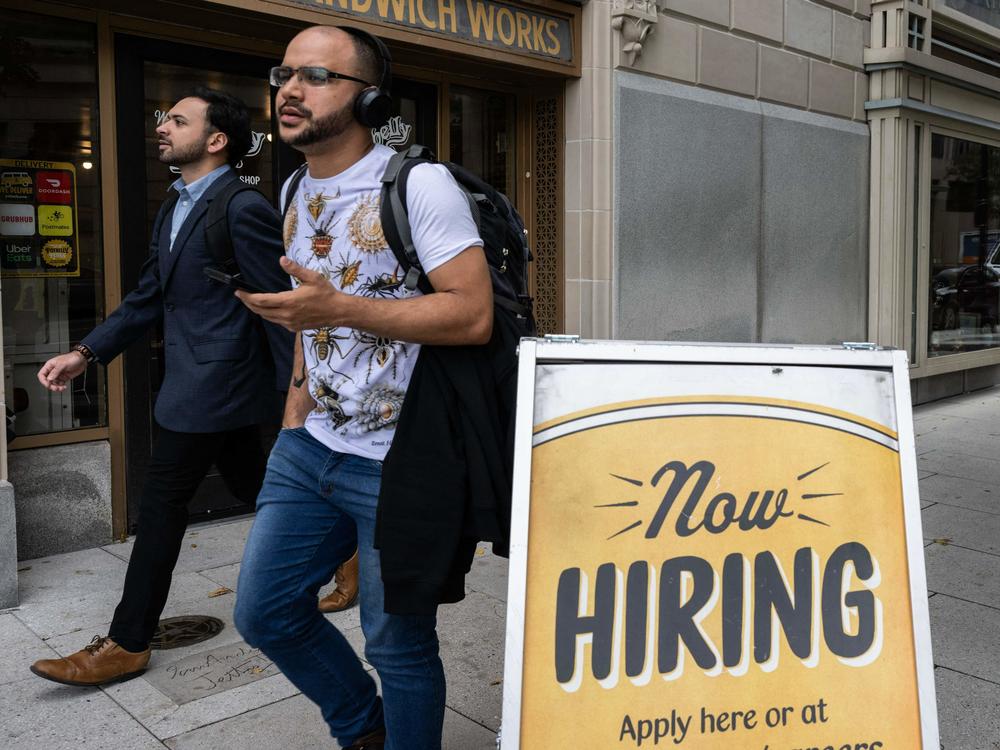Section Branding
Header Content
Many experts feared a recession. Instead, the economy has continued to soar
Primary Content
The U.S. economy continues to defy expectations.
The nation's gross domestic product — the broadest measure of economic activity — grew at an annual pace of 3.3% in October, November, and December, according to a report Thursday from the Commerce Department.
That was substantially faster than forecasters had expected.
It was a fitting end to a year of robust economic growth, defying projections that rising interest rates would tip the economy into recession.
Here are five things to know about the economy.
Consumers lead the way
Consumer spending is the biggest driver of the U.S. economy, and Americans kept their foot on the gas — eating out in restaurants, buying sporting goods, and paying for travel.
Personal spending grew at an annual pace of 1.9% in the fourth quarter, only a modest slowdown from the three months before.
That was fueled by a better-than-expected labor market, with solid job growth and rising wages.
"Consumers are hanging tough," said Mark Zandi, chief economist of Moody's Analytics. "They're spending just enough to keep the economy moving forward but not so much that it would fan inflationary pressures."
Firing on all cylinders
Other parts of the economy are also holding up well.
Government spending, business investment and exports all rose in the fourth quarter. Even the housing sector, which has been battered by mortgage rates that neared 8% in October, was not the drag on the economy that one would typically expect.
"Housing usually in a high-rate environment gets crushed," Zandi said. "It's the thing that drives the economy into the ground. And that just didn't happen this time around."
Instead, new home construction helped make a small positive contribution to GDP.
A head scratcher on interest rates
All the positive news was particularly striking given how much the Fed has raised interest rates in an effort to curb inflation.
Economists feared that the central bank's aggressive actions would trigger an economic downturn, as has usually been the case in the past.
Instead, the economy ended last year 3.1% larger than it was 12 months earlier, raising hopes for a "soft landing," in which inflation is tamed without a sharp jump in unemployment.
The unemployment rate has remained under 4% for nearly two years, while wages are now growing faster than prices and the stock market is hitting record highs.
"Not only was it not a bad year," Zandi said. "It was a really good year."
Inflation is easing
Even though the economy is growing at a rapid clip, it shows no sign of overheating. Price indexes in the GDP report show inflation continued to ease, with core prices rising at an annual rate of just 2% over the last six months.
That should be reassuring to the Fed, which is widely expected to begin cutting interest rates later this year.
"Despite the stronger-than-expected GDP growth rate in the fourth quarter, we view today's data as 'Fed friendly,'" said chief economist Jay Bryson of Wells Fargo Economics.
Bryson expects the central bank to begin lowering rates in May, but adds that an earlier rate cut in March is not out of the question.
But there are potential setbacks
As encouraging as the GDP report is, there are always potential storm clouds on the horizon.
Zandi puts geopolitical risks at the top of that list, with the possibility that Middle East tensions trigger a spike in oil prices.
"That would be a mess," Zandi said. "Right now we're paying close to $3 for a gallon of unleaded [gasoline] which is really good. But if we're at $3.50 or $4, that undermines confidence. It undermines purchasing power."
So far, forecasters have been pleasantly surprised that the economy has avoided such pitfalls, and Zandi is optimistic that the encouraging trends will continue.
"The risks are not just one-sized," Zandi said. "A year ago, it felt like they were all to the downside. Now you think there could be some upside as well, and you saw that in 2023."
Copyright 2024 NPR. To see more, visit https://www.npr.org.


